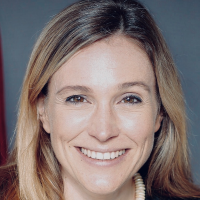Getting Your Family Business Ready for the 'New Normal'

Part one of two
Eighteen months into the COVID-19 pandemic, we are seeing signs of a return to something resembling normality. Vaccination programs are now underway at a substantial pace, and gradually restrictions are being lifted in various countries. But this is an optimistic view of reality. In other countries, case numbers are increasing as new variants emerge to challenge and stress societal systems once more, especially as markets reopen, travel restrictions lift, and furloughed businesses resume trading. It is safe to say that the only thing for sure about this pandemic is that nothing is for sure.
However, the beauty of time is that it provides us with lessons and insights. So, 18 months in, what can we glean about resilience, recovery, and resurgence for family business leaders? These three keywords have been the subject of my podcast series over the past year. This article summarizes some of the key insights from my keynote presentation to the Institute for Family Business Research Foundation and Lancaster University Management School workshop in early 2021.
The first and perhaps most important point is that resilience means making reasonable judgments under high uncertainty—in a changed world that is now being called the “new normal.” But how “new” is this “new normal?”
The ‘new normal’ is not new
The “new normal” was first coined in 2010 by Mohamed El‐Erian in his well‐known Per Jacobsson lecture entitled “Navigating the New Normal in Industrial Countries:”
“Our use of the term [New Normal] was an attempt to move the discussion beyond the notion that the [recent financial] crisis was a mere flesh wound… instead the crisis cut to the bone. It was the inevitable result of an extraordinary, multiyear period which was anything but normal.”
The essential quality of the new normal is uncertainty, and it’s clear that’s what we have today. Floods, natural disasters (fires, earthquakes), the retreat of globalization, rising populism, changing world-leaders, new challenges to health and wellbeing, a global pandemic, financial and economic crises, social crises, climate change, technology breakthroughs -- all are recent and relevant examples of crisis events. Our world is now experiencing the rise of catastrophic events that have bled from the socio-political to the economic and financial, and vice-versa.
COVID-19 affected virtually all countries in the world and almost simultaneously. But in many cases catastrophic events don’t strike everywhere. Other crises are localized or regionalized, and require creative new solutions. For instance, in the mid-to-late 2010s, Greek family businesses turned to the country’s overseas diplomats to help them reach international markets when their domestic market was shrinking. So, what does it mean to be resilient when catastrophic events strike?
Resilience is a property, not a state
The problem with “resilience” is that we can confuse it with inertia and being “hard-shelled.” Let’s put it this way: family businesses should not be like armadillos and retreat into hardened shells as a defensive measure when danger strikes. Inertia represents an inability to change course without deliberate force, and while being hard-shelled as a buffer to a crisis can be beneficial, the family firm must be open to change. For family business leaders, resilience encompasses the ability to endure shock and stress and grow again. For instance, short-term reactions such as firing or cutting the workforce may harm the human capital resources of the business. Over-relying on family employees may raise perceptions of organizational injustice. Large changes in strategic orientation may undermine some of the key capabilities of the firm.
As examples, we can look at businesses that serve specific types of markets and segments to realize that some markets are more resilient than others. Italian family wine-makers Marchesi Antinori and Portugal’s Feuerheerd’s winery serve very different segments but continue to provide high-quality products, focusing on their strengths, heritage, and expertise. Jowissa and Raymond Weil serve the watchmaking industry with watches more reasonably priced than many boutique brands and counterparts, but with a quality and family legacy that draws individuals looking for something different.
However, for other family businesses, the shock has been in their supply chain. For example, PBA is an Italian architectural business that has been hit by multiple crises, from the pandemic to globalization to the restrictions on steel from China when COVID-19 first struck there. The lesson here is to examine the resilience not only of our own business, but also also our key and essential partners.
We also must look at the resilience of our processes and structures. Businesses, rightly or wrongly, often have few if any backup options (e.g., because they may rely on only a few suppliers to save money and improve economies of scale). Even though you may have a solid financial buffer, consistent customer demand, and can speedily make decisions, how well-prepared are you for a scenario where your suppliers or partners are not resilient, and can you control or mitigate that? Making sure that a Plan B is in place is essential.
Resilience, then, is a property a family business must develop in good times, and it will be tested when crises strike. But resilience is not static either, and when crises such as the COVID-19 pandemic happen, the resilience properties of the family business are challenged and stressed in ways that differ markedly from non-family firms. Families must learn from these stresses and challenges and be open to a new vision of what constitutes resilience.
Some closing thoughts
We truly are in a “new normal,” but perhaps without realizing it, it is a new normal we have all been facing for many years. The COVID-19 pandemic changed the world because of the sheer scale of the shock, and its effects and ramifications were felt simultaneously worldwide. Few escaped its effects. The real question is not whether we live in a new normal or not, but which effects of the pandemic will be long-lasting. That question may define a family business strategy for years to come.
In my next article I’ll explore the steps family firms can take to become more resilient.
Listen to my Podcast
A podcast of the keynote talk for the Institute for Family business Research Foundation can be found below.
Learn More
Find out more about the ‘From Resilience to Resurgence’ podcast series at:
Apple Podcasts: https://tinyurl.com/y3dblrgd
Spotify: https://tinyurl.com/1t9dmk5v
SoundCloud: https://tinyurl.com/y3asss43
Find related articles at https://familybusiness.org/profiles/1509

Schulze Distinguished Professor and Professor of Innovation and Entrepreneurship / School of Business / University of Leicester
View Profile
.png)




